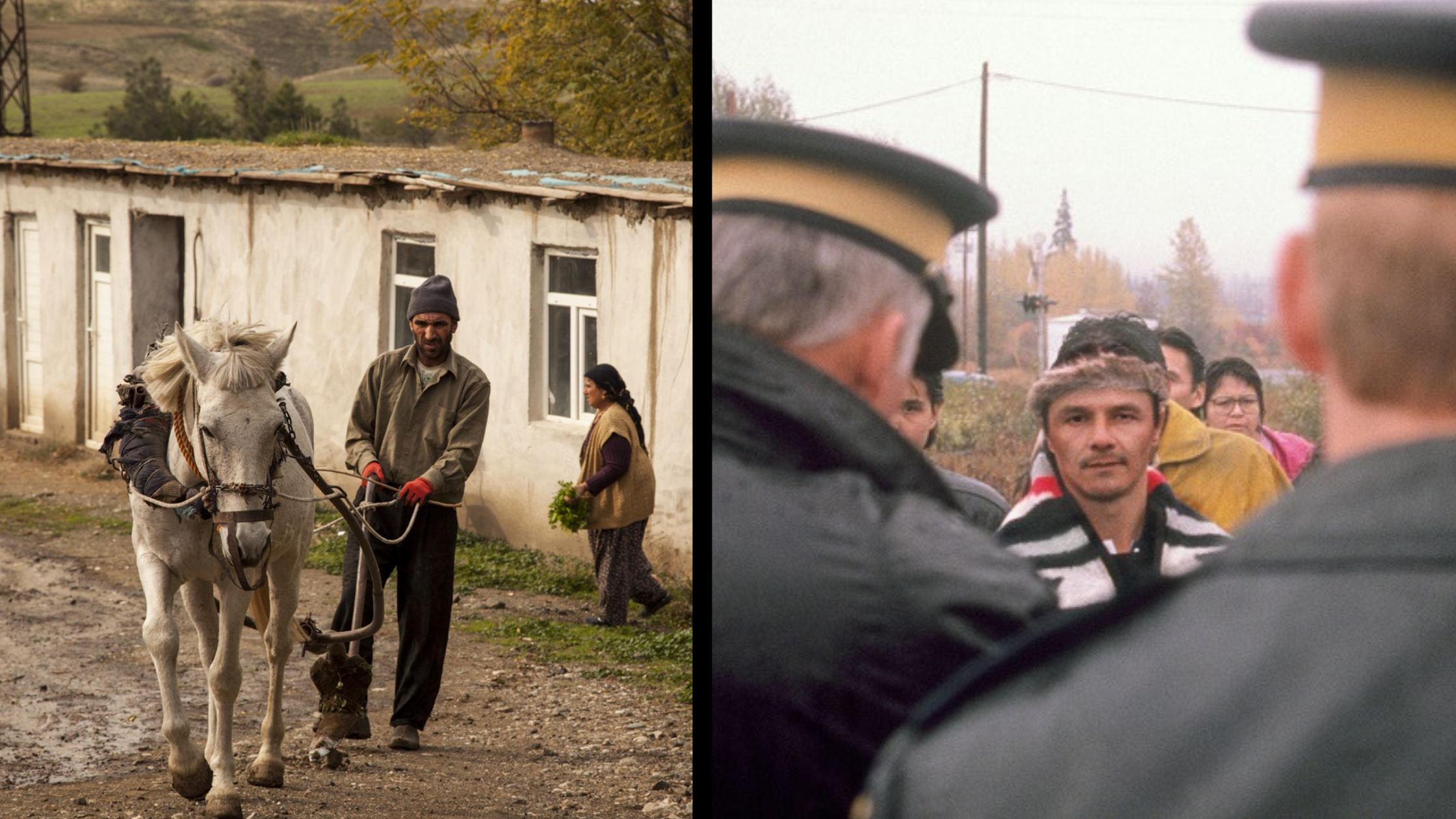This month, the latest releases through CP On Demand feature two stories that explore generational memories of displacement, and challenge notions of land ownership. Through Nettie Wild’s BLOCKADE and Hale Güzin Kızılaslan’s THE RETURN, these exceptional films confront what it means to remember and reclaim a sense of belonging to land.

BLOCKADE
Nettie Wild’s BLOCKADE depicts how members of Gitksan Nation assert their right over land that has been sold to a white settler family by the Crown. As one of the films available through Cinema Politica’s exclusive Nettie Wild Collection, BLOCKADE is a classic title within Wild’s critically-acclaimed roster of films on Indigenous resistance, civil wars, drug addiction and activism.
Released in 1994, BLOCKADE depicts how Canadian colonialism is an ongoing, continuing project — far from something that happened once upon a time, and is now complete and consigned to history books. Four years removed from the Oka Crisis that saw Pierre Trudeau’s Liberal government deploy the military against Mohawk residents of Kanesatake, BLOCKADE offers a glimpse at the banality of Canada’s nation-building project that is as militarized as it is bureaucratic.
This incisive film reveals how much Canadian settlers take for granted in their ability to buy land and build homes on unceded Indigenous territories. Beyond the story of Gitksan land claims and resistance to continued Canadian colonialist expansion, BLOCKADE reflects on deeper rifts between Indigenous and colonial relationships with land: do we relate to land as property, or as something else?

THE RETURN / Hale Güzin Kızılaslan / Turkey / 2015 / 21 ‘ / Armenian – Turkish with English subtitles
THE RETURN
Premiered at Dok Leipzig in 2016, THE RETURN is an independent film produced in Turkey by Armenian director Hale Güzin Kızılaslan, reflecting on present-day Eastern Anatolia, or the Armenian Highlands—a region where Christian Armenians had historically lived alongside Muslim Kurds. Through scenes from the everyday life of present-day occupants, Kızılaslan unravels the generational memory of the Armenian Genocide, remembered as the Medz Yeghern (“Great Catastrophe”).
Through expropriation, displacement and extermination, the Armenian population in this region of the Ottoman Empire dropped from around two million to less than 500,000. Despite the ethnic cleansing committed against Armenians during the First World War, Turkey has refuted claims of genocide. The memory of Armenian settlements in present-day Eastern Anatolia has likewise been erased by the Turkish government, without even memorials or plaques to mark the memory of these atrocities.
Kızılaslan’s eye lingers over scenes of villages like Kahta, where old stone homes and bridges seamlessly meld into the mountainous region surrounding Mount Nemrut. Here, survivors persist, building their lives amid these landscapes of silence.
THE RETURN is especially relevant in a moment of unfolding conflict in Nagorno-Karabakh, where Turkey has been implicated through its military alliance with Azerbaijan. As history comes full circle, land is shown to be the true backbone to community.


